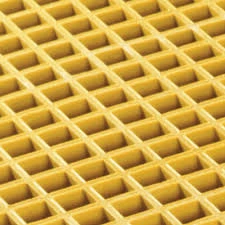loading...
- No. 9, Xingyuan South Street, Dongwaihuan Road, Zaoqiang County, Hengshui, Hebei, China
- admin@zjcomposites.com
- +86 15097380338
- Welcome to visit our website!
frp stair
The Evolution and Benefits of FRP Stairs
In recent years, the advancement of materials science has revolutionized the construction industry, and one of the most noteworthy innovations is Fiber Reinforced Polymer (FRP). This composite material, consisting of a polymer matrix reinforced with fibers, offers a plethora of benefits, making it an ideal choice for various applications, particularly in stair construction. FRP stairs have gained popularity due to their unique properties, including durability, lightweight nature, corrosion resistance, and versatility.
The Evolution and Benefits of FRP Stairs
Another significant benefit of FRP stairs is their lightweight nature. Weighing significantly less than conventional construction materials, FRP components are easier to transport and install. This can lead to considerable savings in labor costs and time during the construction phase. Additionally, the reduced weight allows for the design of more intricate stair configurations that may not be feasible with heavier materials, providing architects and designers with greater flexibility in their projects.
frp stair

Safety is another critical factor in construction, and FRP stairs excel in this area. The slip-resistant surfaces of FRP can be tailored to meet specific safety requirements, making them an excellent choice for both indoor and outdoor applications. Whether in factories, schools, or public parks, these stairs provide reliable traction, reducing the risk of accidents. Moreover, FRP can be manufactured in various colors and designs, making it easy to blend with existing architecture while ensuring visibility for stair edges and other safety features.
Sustainability is an increasingly vital consideration in construction, and FRP is a step forward in this regard. Many FRP products are made from recycled materials, and the manufacturing process often has a lower carbon footprint than traditional materials. Additionally, the long lifespan and low maintenance requirements of FRP stairs mean that they contribute less waste over time compared to materials that require frequent replacement.
In conclusion, the evolution of construction materials has introduced FRP stairs as a superior solution to meet modern building needs. Their blend of durability, lightweight construction, enhanced safety features, and ecological benefits makes them a compelling choice for various applications. As industries continue to evolve and prioritize sustainability and efficiency, FRP stairs will undoubtedly play a critical role in shaping the future of construction. Embracing these innovative materials is essential for builders and architects looking to create safe, long-lasting, and environmentally friendly structures.
-
GRP Structures: The Future of Lightweight, High-Performance EngineeringNewsJun.20,2025
-
FRP Water Tank: High-Performance Storage for Corrosive and Clean Water SystemsNewsJun.20,2025
-
FRP Square Tube: The New Industry Standard for Chemical and Structural ApplicationsNewsJun.20,2025
-
FRP Pultruded Profiles: The Ultimate Choice for Lightweight Structural StrengthNewsJun.20,2025
-
FRP Handrails: The Safer, Smarter, and Stronger Choice for Modern InfrastructureNewsJun.20,2025
-
FRP Grating: The Smart Solution for Durable, Lightweight Industrial FlooringNewsJun.20,2025
-
Why Choose a Galvanized Water Tank for Your Storage NeedsNewsMay.21,2025
